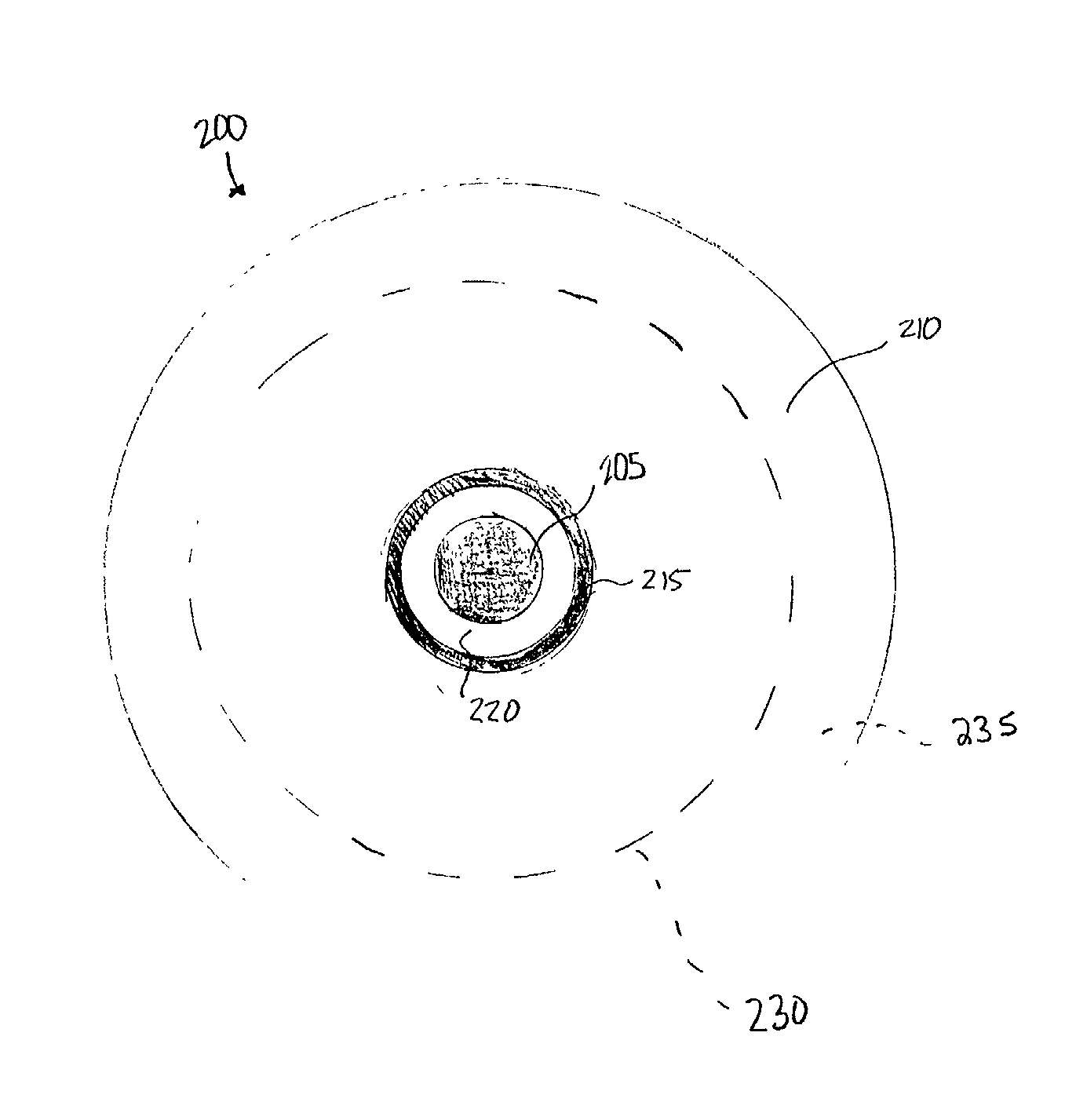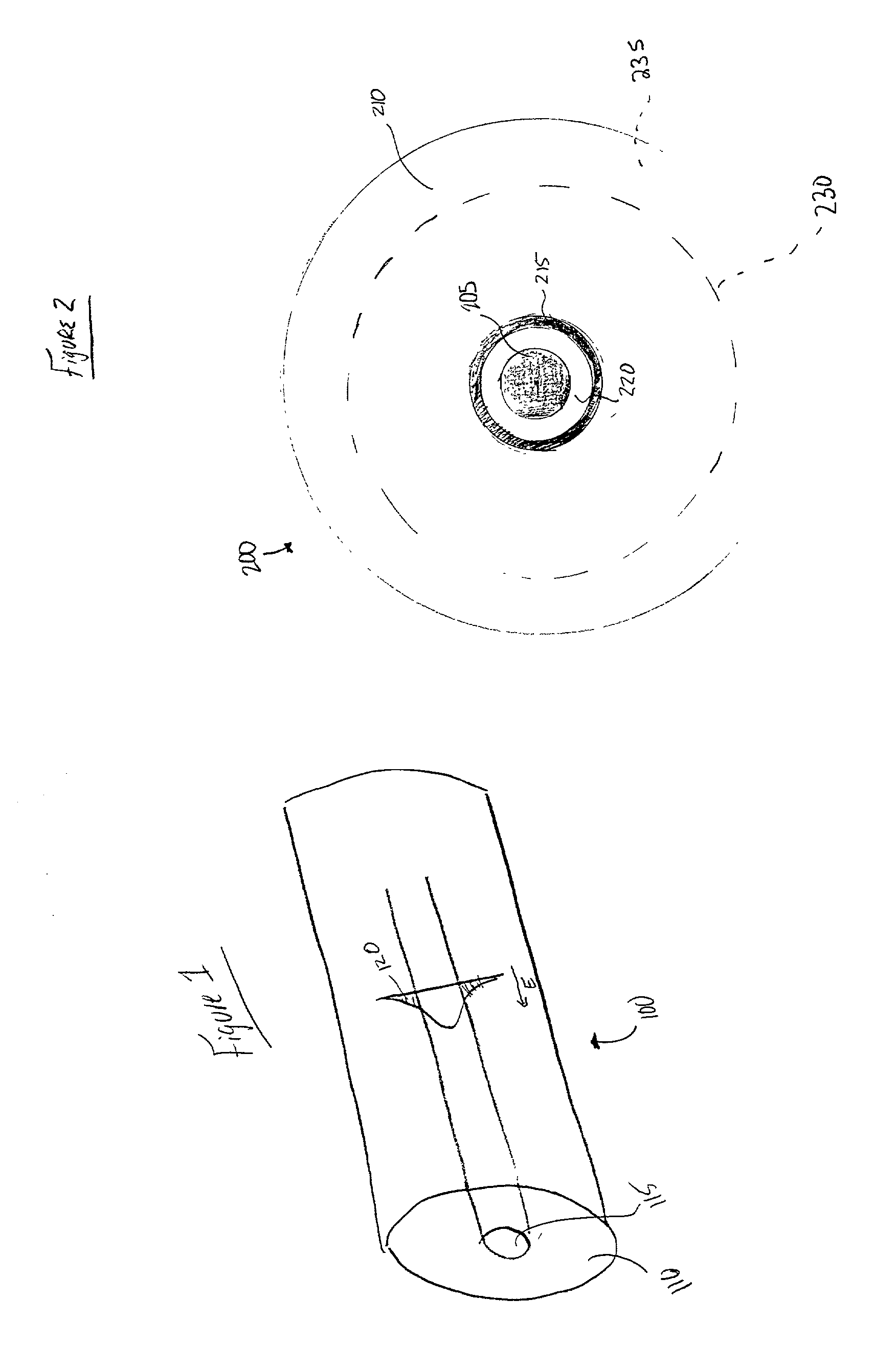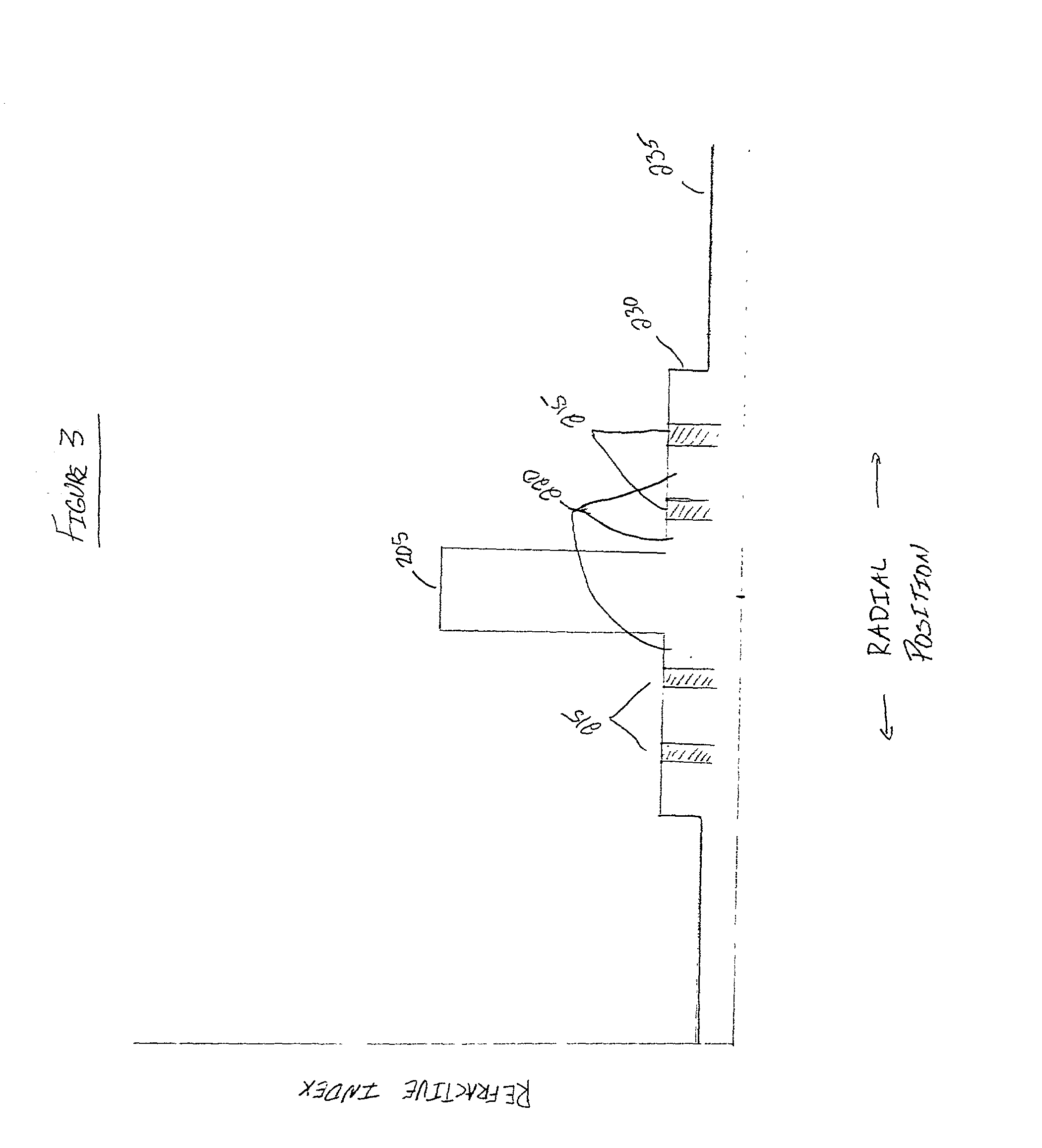Optical fiber with reduced cladding-mode loss
a technology of optical fibers and cladding modes, applied in the field of optical fibers, can solve the problems of cladding-mode coupling loss (cmcl), degrade the performance of bragg gratings, and thus the overall system performance, and achieve the effect of reducing the amount of coupling, reducing the loss of cladding-mode coupling, and attenuating the power propagation
- Summary
- Abstract
- Description
- Claims
- Application Information
AI Technical Summary
Benefits of technology
Problems solved by technology
Method used
Image
Examples
Embodiment Construction
[0014] In most light-carrying optical fibers, there exists an interface between the core and the surrounding medium, typically a glass cladding. This structure supports a number of cladding modes (i.e., signal power that propagates through the cladding) as well as the core mode, which propagates through the fiber core. With reference to FIG. 1, a typical optical fiber 100 includes a cladding 110 surrounding a core 115. FIG. 1 depicts the energy profile of a single-mode beam, having a gaussian energy distribution, propagating through core 115. Although the bulk of the propagating signal power remains within the core, a portion, the "tail" 120, extends radially out of the core and propagates within the cladding 110. Although the gaussian profile is asymptotic, tail 120 is considered effectively to extend to mode field diameter-i.e., the point at which the power level becomes negligible (less than the noise level).
[0015] With reference to FIG. 2, an optical fiber 200 in accordance with...
PUM
 Login to View More
Login to View More Abstract
Description
Claims
Application Information
 Login to View More
Login to View More - R&D
- Intellectual Property
- Life Sciences
- Materials
- Tech Scout
- Unparalleled Data Quality
- Higher Quality Content
- 60% Fewer Hallucinations
Browse by: Latest US Patents, China's latest patents, Technical Efficacy Thesaurus, Application Domain, Technology Topic, Popular Technical Reports.
© 2025 PatSnap. All rights reserved.Legal|Privacy policy|Modern Slavery Act Transparency Statement|Sitemap|About US| Contact US: help@patsnap.com



